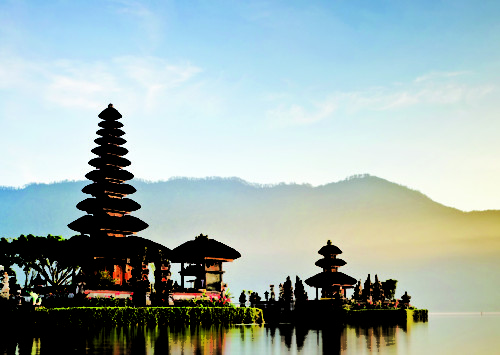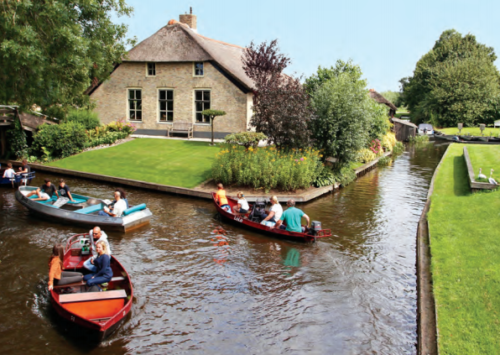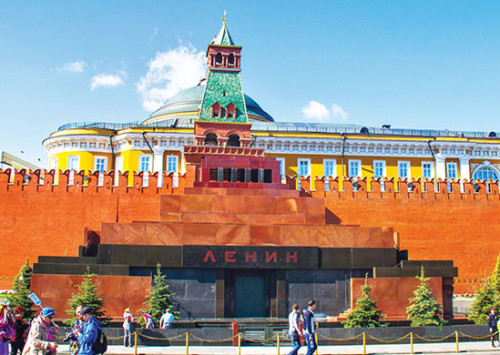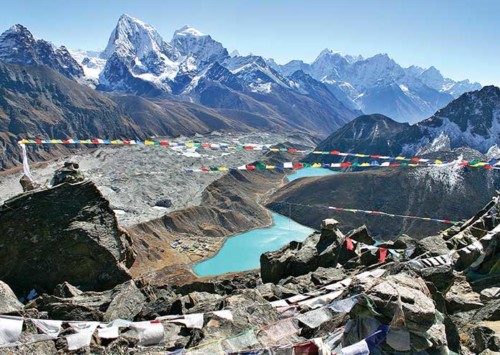A Walk Through
India Outbound
March-April 2019

Here’s everything you can see, eat and do in Jerusalem – a city that can never leave you untouched.
The spiritual energy of the holy city of Jerusalem, therapeutic stillness of the Dead Sea, magnificent beauty of Galilee’s green hills and valleys, impressive archaeological sites and Roman ruins, traditional and new-age Israeli cuisine, religious and cultural devotion of the Muslims, Christians, and Jews and the country’s compelling politics – it all leaves a lasting impact on different facets of your life. A land of diversities, Israel guarantees an experience of a lifetime through the rapid shift in landscapes, weather, behavioural patterns and religious sentiments of people. In less than three hours, you can be transported from a primeval desertscape to aquamarine waters of the Mediterranean coast.
But, what you see is only half the story. What you hear from the locals is what truly makes for the enriching other half. Whether it’s your friendly tour guide, roadside falafel seller, a civilian with a pistol, a smiling owner of a no-frills hummus joint or just another guard at a security check point, don’t miss out on an opportunity to interact and strike deep, meaningful conversations with the locals. Be open to telling them a bit about your culture before enquiring about theirs. It’s easy and worthwhile to make friends in Israel!
Here’s tracing the history of Israel through the city’s architecture, food and culture.

Clockwise from top: Western wall, Jerusalem; Kneeling at the Stone of Unction; People praying at the Western wall; Covered alleys of Mahane Yehuda Market; Man selling pickled olives
Jerusalem: A city that moves you
A piece of living history, Jerusalem is the world’s foremost pilgrimage destination and a city that is sacred to half the human race. One of the most disputed places in the Middle East, it is sacred to Jews, Christians, and Muslims. For Jews, the imposing Western Wall is the last remnant of the ancient Second Temple complex. For Christians, Jerusalem is that city that saw the death, burial, and resurrection of Jesus of Nazareth while Muslims believe that Masjid-Al-Aqsa is the place from which Prophet Muhammad ascended to Heaven for his meeting with God. Home to primary sites of these great monotheistic religions, Jerusalem’s Old City is truly magical. Something that catches your eye instantly is the clothing of orthodox Jews. Even during the high summer season, you notice well-dressed, bearded men sauntering in black suits and hats! At the same time, the modern part, with its thriving café, bar and restaurant scene is a different world altogether!
Let your trip through the Old City begin at Jaffa Gate while taking note of its distinctive right-angle to the 16th century Ottoman walls. After a short saunter down David Street, enter the Christian quarter, towards the Church of the Holy Sepulchre. It is here that you find pilgrims kneeling at the Stone of Unction, on which Jesus’s body is said to have been prepared for burial. At the busy and vibrant Muslim Quarter, sample traditional Arabic coffee at one of the souk cafes before wending your way to the Western (or Wailing) Wall, one of the holiest sites in Judaism. Known as the Kotel in Hebrew, the wall is the closest site at which Jews can pray to where they believe the Jewish Temple stood 2,000 years ago. Feel free to write your prayer on a piece of paper and slide it into one of the cracks on the wall! If you’re lucky enough, you might witness a Bar Mitzvah celebration which is a Jewish coming of age ritual.
Walk a little further to reach the magnificent Temple Mount; it’s undisturbed wide expanse is a counterpoint to the bustle of the Old City streets. Unless you’re a Muslim, you cannot enter the Dome of the Rock but you can definitely wander around the plaza to appreciate intricate Islamic architecture with its perfect proportions, tile-encrusted exterior walls and glittering gold roof.
The Armenian Quarter’s 1,500 residents are the only remaining representatives of a community that has been in Jerusalem for nearly two millennia. Visitors can join them for a service in the 12th-century St James’ (Jacques’) Cathedral, and afterwards head to the Citadel (Tower of David) at Jaffa Gate, which is now home to the impressive Museum of the History of Jerusalem.
Tip: Bring home some gorgeous, hand-painted ceramic plates from Armenian Ceramic Centre in the Christian Quarter of Jerusalem.
If you thought the Old City is all about shrines, you’re wrong! Its cobblestone alleyways, arches, hidden courtyards bring you back in time. There are little markets in every quarter where you can find vendors selling everything from trinkets, incense sticks, ceramics, magnets, embroidered garments, and cushion covers to pomegranates, prickly pears, Arabic sweets and aromatic spices.
Tip: If you’re in Jerusalem for a short time, go around the city on a segway! Guided segway tours are not only a fun way to explore the walled capital city but also very informative as you’re accompanied by a local who narrates interesting tales on way.
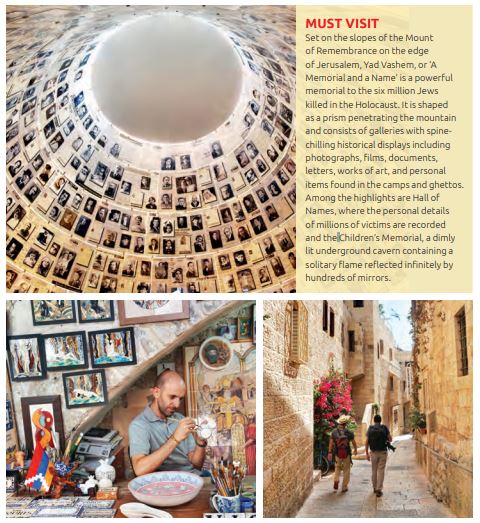
Left: Armenian Ceramic Centre in Jerusalem; The walled city of Jerusalem
The soul of a city lies in its food
Geography has a large influence on Israeli cuisine which is a delectable blend of recipes from North Africa (Morocco, Libya, Tunisia, and Algeria), its Middle Eastern neighbours (Lebanon, Yemen, and Iraq), as well as the Mediterranean countries, along with Eastern Europe and Russia. Among other things that have shaped the cuisine are Jewish dietary laws, holidays and festivals as well as the native ingredients of the land. No wonder chickpea specialities like hummus, pickled olives, Arabic coffee and freshly squeezed pomegranate juice are some of the items that make an appearance throughout the country! Also lunch, and not dinner, is the focal meal of the day in Israel! Most importantly, all the food is high on health quotient! That means, if you eat in moderation (which is rather tough), you may not come back with uncomfortably tight jeans or a bulging tummy! While most dishes consist of veggies, meat lovers have their own share of finger-licking specialities. Moreover, the variety of food served here is such that even a committed non-vegetarian would happily tuck into all the vegetarian dishes. After all, Israel is listed as one of the top vegetarian friendly destinations in the world!
Consider starting your tasting tour in Jerusalem at the most famous Mahane Yehuda market. More often known as the Shuk, this is where the whole of Jerusalem comes together! With more than 250 stalls and lots of daytime action, it is at its busiest best on Thursdays and Fridays when Israelis shop for Sabbath. The market has two major areas – the open-air market jam-packed with local produce, which includes everything from fruits, vegetables, freshly-baked bread, cookies, and spices to poppy-seed pastries, extra large green and black olives, and the covered market with its by lanes that are home to some interesting cafes, bakeries, and food joints that sell pancakes, juices, pizzas and more. Alternatively, they make for good WiFi-enabled lounging spots. Don’t just photograph edibles and people at the Shuk, sample some dried pineapple slices and strawberries or pack a box of marbled halvah; a sweetmeat made of sesame oil and nuts. Another must buy is pitzuchim trail mix of all sorts of nuts, roasted seeds, and dried berries. If you’re visiting the market during the day, make sure to head here again on one of the nights. Post sunset, it transforms into a hip street full of restaurants and bars. A great spot for meeting some tourists over a glass of craft beer and foot-stomping Israeli music! It’s also worth walking around early morning before the stalls open, to check out the colourful street art by well-known international and local artists.
The Jewish Day of Rest, Sabbath in Hebrew, begins on Friday at sundown and ends on Saturday at sundown. A big part of Sabbath is the relishing of three Sabbath meals, mainly the first two — Friday night dinner and Sabbath lunch. At the Friday night dinner, Jewish families transition from their everyday lives to a more spiritual time. Tables are set with white tablecloths, gorgeous cutlery as well as candles, wine, and challah loaves that are needed to perform Sabbath religious rituals. If you’re invited by a local for Sabbath dinner, never miss the opportunity to experience the authentic traditional meal.
KNOW BEFORE YOU GO
• Security checks are rigorous at Ben Gurion airport. Being singled out for an in-depth luggage search is very common.
• The domestic currency is Israeli Shekel (ILS). An ILS gets about INR 20.
• Workdays are Sundays through Thursday and the weekend is Friday and Saturday.
• All public offices and most stores in Israel are closed on Sabbath. In most cities, public transportation does not operate.
•Israel’s national language is modern Hebrew. English is the main language for foreign communication.
• Dress modestly when visiting holy sites. Long trousers for men; covered head, shoulders and legs for women. Generally, a headscarf or shawl is useful to meet modest dress requirements in religious buildings.
• No entry/ exit stamp will be put on travellers’ passports. Entry/ Exit slips will be provided at immigration after the passport has been scanned. The slips must be retained until your final departure from Israel.

